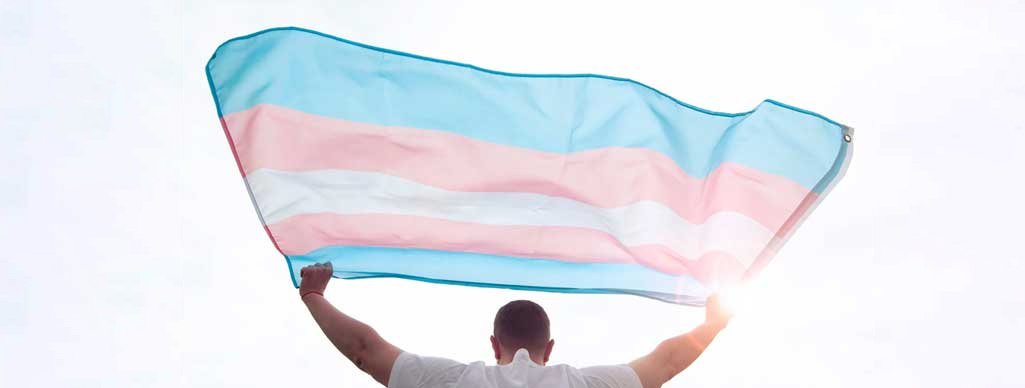
Himanshu Baliyan
baliyanh@indianoil.in

Abstract
The article is meant to kick in inertia to the discussion to reaffirm terms such as Gender and Inclusivity. With visibility comes the debate, and with debate reform. This piece intends to take an initial few steps towards us having an inclusive work environment bereft of any form of discrimination based on gender.
Main Content
Recently I took the Gender Sensitization course in Swadhayaya, the e-learning module of IOCL. With a resounding emphasis on the awareness of what constitutes sexual harassment in the workplace for employees, the course serves its purpose. The modes of redressal and associated nitty-gritty of the official channels are elaborated with candour. That is if we limit the vision towards the issue of POSH for women employees only. Though the critical distinction between Sex and Gender is taken up in one of the slides, it feels unjustified and not elaborative enough for readers of an almost entirely cisgender community to grasp the objective.
The author of the course is not to take the blame for this. Anything that is different, unconventional, and non-general needs a little more regression.
After successful completion of answering all the questions in the assessment section, I was left with a few questions of my own. Why was a bi-gender approach taken? Do the policies imply the same for transgender staff? How do organizations treat transgender people abreast with the other two genders?
Another input that fortified these questions, even more, was the abrupt removal of the new training manual on the inclusion of transgender children in schools by NCERT from their website following outrage on social media and a letter from NCPCR asking NCERT to “take appropriate action in rectifying the anomalies present in the document”.
The training manual highlighted practices and strategies including the provision of gender-neutral toilets and uniforms, sensitization on non-teaching staff, discontinuing practices that segregate children into various school activities based on their gender, and inviting members of the transgender community to speak on campus, among others.
The drafting committee of the manual included delegates from The Department of Gender Studies of NCERT, the University of Delhi, the Transgender Resource Centre, the Centre for Law and Policy Research (CLPR), and others. With such diverse and rightfully entitled people from all facets of society involved in the drafting of the document, the entire third gender has been robbed of a very legitimate opportunity to removal of neglect, discrimination, and ostracization from a very young age.
It is established that education is the road that leads us toward social reform. Despite many important judgments such as the NALSA vs. UOI judgment 2014, the Transgender Persons (Protection of Rights) Act 2019, and the National Education Policy 2020 (NEP2020); the ground-level work towards sensitization is still just in conception.
With both medicine and law backing the fact that alternative gender and sexual orientation at natural, the gauntlet needs to be shifted to a progressive workplace where people are celebrated for their differences. Inception begins at educational institutions – houses, schools, and colleges. With the majority of the entrance exams favouring the appearance of female/ PWD/ SC/ST candidates by providing abated fees, the candidature of (almost all) transgender people is pushed to “All other candidates”. Reservation policies follow similar incongruity.
Back in 2021, the Delhi Govt. has made it mandatory for all public buildings under all the departments, autonomous bodies, PSUs, corporations, and local bodies of the Government of NCT Delhi to have separate and exclusive washrooms for transgender persons. The Delhi government has given a maximum time of two years to all agencies to build these exclusive toilets. Policies like this, though small, create a sense of validation.
The very preamble of the HR policy of IOCL to ensure Equal Opportunities at the workplace has the undertaking of ensuring that gender plays no role in the employment of a person. The HR department, HODs, and all employees are equitably responsible for ensuring that the policy is abided by. Employees are given the right to be treated indifferently and provided aid wherever it is required. These aids include access to basic amenities, assistive technology devices, and accessibility among others.
While this policy has done a wonderful job in creating a welcoming and paralleled work environment for PwD, religious and social minorities, a great scope of betterment remains towards being inclusive of sexual minorities of the LGBTQ+ community. A dedication to Gender welfare, holistic implementation of POSH, Gender-neutral washrooms, awareness, and sensitization workshops for the much more visible and valid LGBTQ+ community are some of the aspects that the corporate world is already practising.
Corporate undertook another great initiative last year with the launch of the annual HR survey: Pratidhwani. In one of the latter questions, employees were asked if they feel that the organization treats them indifferently irrespective of their sexual orientation. With policies that affirm to cisgender heteronormative lifestyle, “fully agree” was just not the appropriate response. But hopefully, with proper reforms, the universal response could be shifted.
The published report “A Manifesto for trans inclusion in the Indian Workplace” by Godrej India Culture Lab is a great resource for understanding and imbibing inclusivity in the workplace. The document provides detailed insight into the plausible challenges and strategies to mitigate them considering the legal and socio-economic aspects of the sophisticated Indian society.
The majority of Fortune 500 companies halve already made concrete changes in their corporate policies towards becoming inclusive in the real sense of the word. 83 %prohibit discrimination based on gender identity, 66% have Transgender-Inclusive Benefits, and 72% are Organizational LGBTQ Competent as per Human Rights Campaign Foundation’s Corporate Equality Index
Shell, Total Energies, Cisco, Wipro, and Godrej are just names that have joined the pride march toward inclusive workplaces.
Conclusion
With a large chunk of the workforce now consisting of Gen Z and Millennials, drastic reforms are a matter of “must be” and not mere “should be”. Non-conventional has become such a norm that archaic conventions need to be shattered and reinvented if we wish to continue being amongst the list of employers that make up the list of best workplaces.
A very frequent acronym in our work life is VAPT which tests the security robustness of an IT application. Using it in the current perspective, we could make the four pillars of inclusivity:
Validation: Creation of a Gender cell for the welfare of the LGBTQ+ community. Interventions and campaigns with the aim to create awareness and reduce queerphobia and make everyone feel included and valued.
Acceptance: Indifferent attitude towards all employees in the field of work and HR policies. Corporate medical benefits should extend gender transition support and extend policies & benefits for same-sex partners for all spousal benefits.
Protection: Corporate POSH should be gender-neutral. Equal opportunities and the right to not be discriminated against or harassed need to extend to one and all.
Training: Gender sensitization training needs to include the concept of the third gender and should be mandated to all employees. International Women’s Day should celebrate the womanhood of cisgender and transgender women with parallel zeal.
References
Article “NCERT Removes Teacher-Training Manual on Transgender-Inclusive School Education After Backlash” dated 10.11.2021, in The WIRE (https://thewire.in/lgbtqia/ncert-removes-teacher-training-manual-on-transgender-inclusive-school-education-after-backlash)
Article “NCPCR issues notice to NCERT on transgender inclusion manual” dated 03.11.2021, in The Hindu (https://www.thehindu.com/news/national/ncpcr-issues-notice-to-ncert-on-transgender-inclusion-manual/article37328033.ece)
IOCL Equal Opportunity Policy (File no DP/5/4/17 dated 28.02.2019), uploaded on Corporate HR Unnayan portal (https://unnayan.indianoil.co.in/omnidocs/integration/foldView/viewDocsMain.jsp?OD_UID=-8675790176295935722″target=”_self”)
Article “All govt offices, MCDs, police to have separate toilets for transgender persons” dated 17.02.2021 in The Hindustan Times (https://www.hindustantimes.com/cities/delhi-news/all-govt-offices-mcds-police-to-have-separate-toilets-for-transgender-persons-101613584502022.html)
Article “Diversity & Inclusion in Workplace” by Avik Bakshim IOCL in HR Vista (https://www.hindustantimes.com/cities/delhi-news/transpeople-welcome-the-decision-for-separate-toilets-but-need-gender-neutral-toilets-101614059375436.html)
Article “LGBTQ Equality at the Fortune 500: in Human Rights Campaign Foundation (https://www.hrc.org/resources/lgbt-equality-at-the-fortune-500)
Article “Corporate Equality Index 2022” in Human Rights Campaign Foundation (https://www.hrc.org/resources/corporate-equality-index)
Report “A Manifesto forTrans Inclusion inthe Indian Workplace” by Godrej India Culture Lab dated December 2018 (https://indiaculturelab.org/assets/Uploads/Godrej-India-Culture-Lab-Trans-Inclusion-Manifesto-Paper3.pdf)
Posted in Diversity & Inclusion | No Comments »
Recent Articles
- Navigating the shifting tides of Diversity & Inclusion: An odyssey through Tech’s Evolution
- Unlocking Competitive Edge: Harnessing D&I Networks for Sustainable Success
- The Spark Of Inclusion (Illustrated Story on Diversity and Inclusion)
- Work Force Dynamics
- ONGC_MOSAIC
- Compassion and Compassionate Leaders at Workplace
- Diversity & Inclusion in Workplace
- Gender Inclusive leaders – Catalysts for gender-balanced workplaces
- Diversity & Inclusion
- The rest 5 million: A cry for the third gender inclusion in the Indian Workforce
- Embracing Differences, Enhancing lives
- Role of HR in ensuring a vibrant workplace: leading with acceptance, compassion and inclusion with focus on LGBTQ+ employees
- Equality to Equity
- Holistic Inclusivity: The Third Gender
- Inclusion is a Way for Sustainable Business
- Diversity & Inclusion: An Enduring Legacy in India’s Journey
